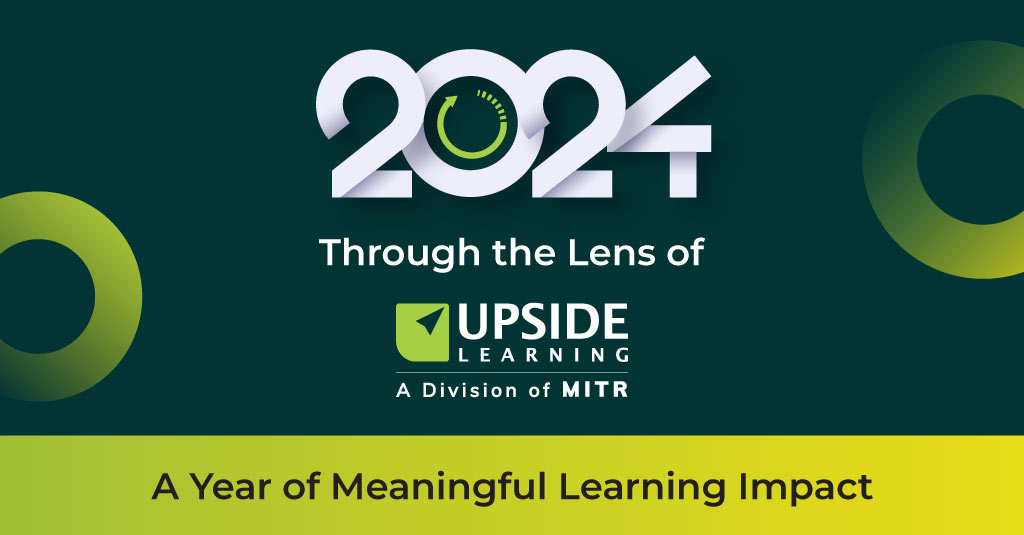“Such is the pace of change and the need to adapt to changing situations that the practices of yesterday will not help us meet the demands of today” – Alvin Toffler
Learning Technologies have evolved and how! In 2010 we attempted to look into the future, predicting the key trends in 2015, in a blog post titled ‘Future of Learning Technology – 2015‘. Now in 2015, we try to look back at those trends to find out how they turned out. So going by the same order here’s the prediction report in 2015.
1. Our 2010 prediction: Mobiles will become the platform of choice for workplace learning
Verdict: Almost there
Mobiles have very rapidly grown as device with increasingly larger part of the population using mobile phones for conducting their daily activities (See this report, titled Smartphone Users Worldwide 2012 – 2017, from eMarketer).
When it comes to learning on mobiles – while mobiles are not the platform of choice, at the same time, the use of mobiles for learning has been on a sharp rise. And it is also reflected by the sheer number of tools and services available around mLearning, responsive eLearning, LMSs getting responsive, etc. All this is to cater to the multi-device environment of which mobiles are now a significant part.
2. Our 2010 prediction: Performance Support will increase many-fold and we will see a lot of training take the shape of performance support
Verdict: Correct
The potential for performance support has never been greater!
In fact, Performance Support and Mobile Is A Match Made In Heaven! Mobile is an ideal platform to reach learners with “just in time, just enough and just for me” content. With an increasing number of employees now using mobile devices on-the-job, it is only natural to integrate mobile performance support into organisational learning and development strategy. Thanks to QR codes, GPS and other technologies, mLearning allows to put learning in a context, depending on the location of the learner. It’s also great base for using Augmented Reality as a support tool.
Organisations have now started to evaluate their ILT and eLearning to determine how to bring the most relevant information to the learners in an easily accessible format. The performance support tools are selected from the range of mobiles, tablets, augmented reality, and wearable computing devices in order to reinforce the existing training and improve the performance potential.
3. Our 2010 prediction: Tablets will emerge as support devices
Verdict: Correct
In 2013, Apple topped $1 billion in education sales for the first time ever, and today, iPads continue to hold the market share among education tablets. Not only have the tablet shipments overtaken the PC ones, but their use in workplace learning is far greater than it was 5 years ago.
4. Our 2010 prediction: The LMS will evolve to support (not manage) Formal + Informal + Social + Non-Formal learning components
Verdict: Increasingly so
In past 5 years, there has been an increasing focus on embedding interfaces in the LMS which go beyond conventional training management methods. Most organisations now need the LMS to not only help learners access eLearning but also allow them to interact with others and generate and share content that can foster a learning environment. Increasing use of mobiles to access LMS also is a big driver here. LMS on mobiles can make the informal use easier and more popular among users given its ease for doing so.
5. Our 2010 prediction: Games (and simulations) will become integral part of workplace learning
Verdict: Slowly coming about
In 2011 Gartner predicted that, by 2015 more than 50% of organisations that have managed innovation processes will gamify those processes. Games and simulations allow learners to engage with the content and apply their knowledge and skills in a virtual environment.
Gamification though an old concept, still stands to be harnessed to its full potential in the years to come.
6. Our 2010 prediction: Birth of new Authoring Tools
Verdict: Correct
The release of Articulate Storyline 2 and its increased functionality stands for the fact that authoring tools are undergoing an exponential growth.
Earlier eLearning courses were mostly designed using Adobe Flash, which had allowed eLearning professionals to deliver content that was immersive and effective. However, with the growing multi-device usage and mobile device’s incompatibility with Adobe Flash, HTML5 came into play. HTML5 is supported on a wide range of platforms and browsers, and also allows for offline storage and data management. Owing to the growing number of mobile device users and BYOD rise, HTML5 eLearning authoring tools have become invaluable within the eLearning industry.
Currently there is a wide range of authoring tools that can both help in converting the legacy content and which can also be used to develop new, mEnabled content for delivery to iPads and tablets. However, as each tool offers a variety of features, choosing the best fit is a complicated task.
7. Our 2010 prediction: Emergence of Personal Learning Agents
Verdict: Correct
In 2010 we had said, “Having a software agent that runs on a personal computing device such as a mobile phone or tablet and constantly monitors content streams on the internet to provide up-to-date information based on personal preferences, workplace conditions, or for the task at hand will make a good performance support and learning assistance system”. By 2015 this has already come true in the form of ‘Personal Learning Agents with Android Wear‘.
With that, we wrap up our review on the 2010 predictions. What do you think? Have the predictions been accurate? We would love to know your thoughts on this blog. Please leave your comments below.



















